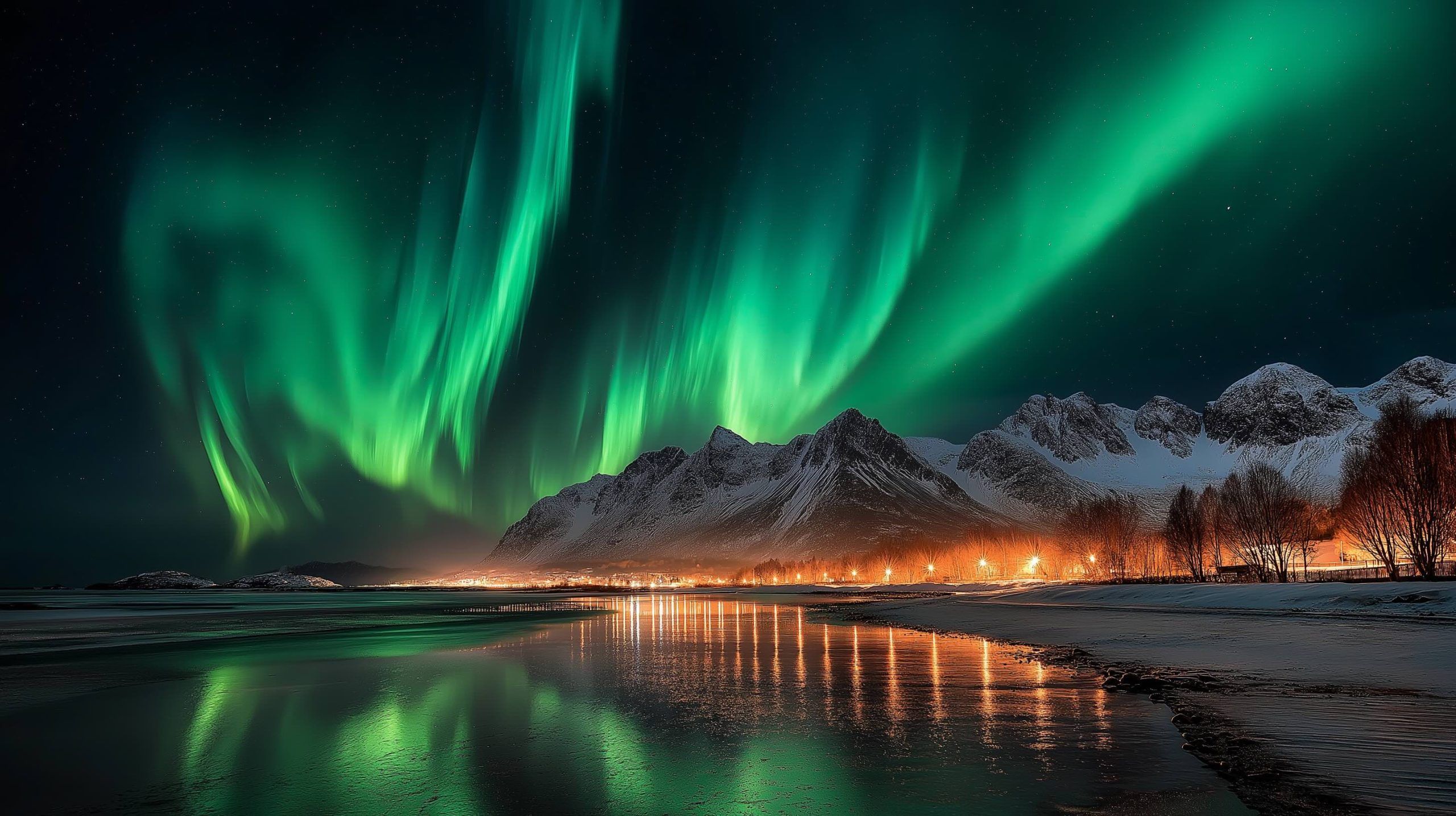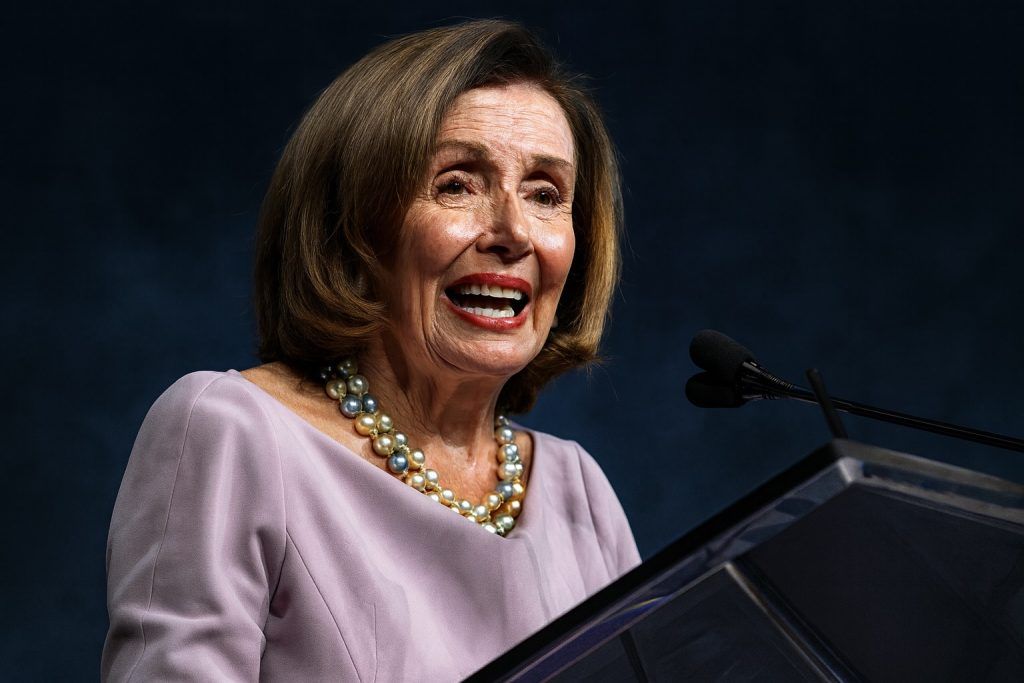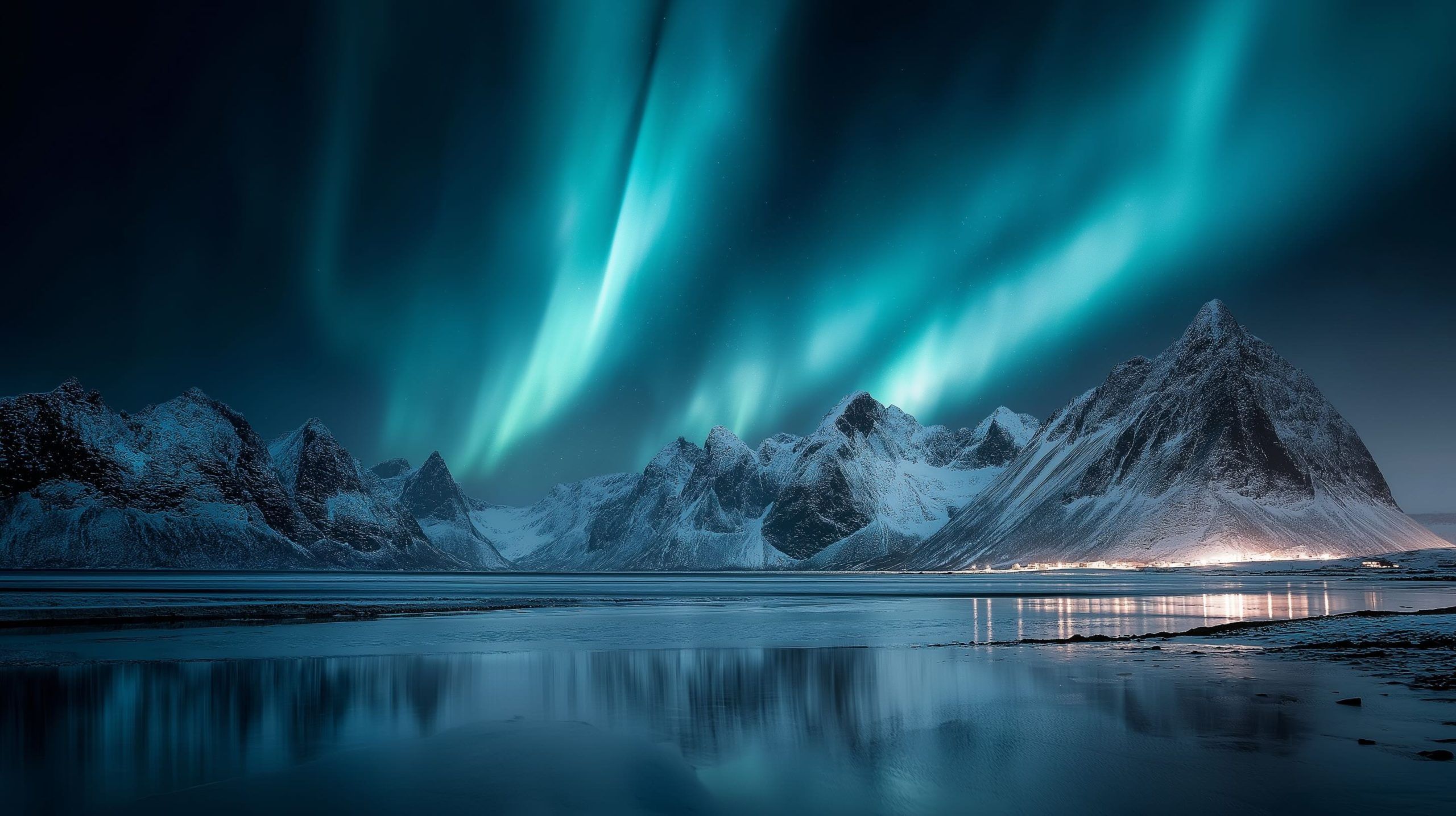- G2 Storm Watch: NOAA’s Space Weather Prediction Center has issued a G2 (Moderate) geomagnetic storm watch for Oct. 16, 2025, warning that “isolated G2 (Moderate) geomagnetic storm activity is likely by late on Oct. 16” due to incoming solar eruptions [1].
- Multiple Solar Ejections: A train of coronal mass ejections (CMEs) launched from sunspot AR4246 on Oct. 11–13 is forecast to hit Earth Oct. 15–17, potentially sparking “impressive auroras” as the charged solar plasma collides with our magnetosphere [2].
- Wide Visibility Range: Forecast maps show up to 15 U.S. states fully or partly within the aurora‐viewing zone. This includes Alaska and many northern-tier states – from the upper Midwest to the Northeast (for example, parts of Montana, Minnesota, Michigan, New York and Maine) [3] [4]. Under dark skies, viewers in these regions have a good chance of seeing northern lights if the storm hits as predicted.
- Aurora Intensification: Even a minor G1 storm can produce a faint glow on the northern horizon, but a G2 storm can bring “dancing lights overhead” [5]. In practical terms, a G2-level disturbance (the scale runs G1–G5) can trigger power grid fluctuations and satellite signal glitches, yet also push auroras much farther south than normal (previous storms have shown lights visible as far south as New York and Idaho [6]).
- Solar Cycle Peak: The Sun is near the peak of its 11-year cycle, with unusually high sunspot counts and activity. [7] This elevated activity (solar cycle 25) means strong flares and CMEs are more common, making late 2025 a particularly active aurora season.
What’s Causing the Aurora Spectacle?
The Northern Lights (aurora borealis) occur when bursts of solar plasma slam into Earth’s magnetic field and excite atmospheric gases. In this case, four CMEs from an active sunspot region are en route to our planet. Space weather forecasters describe it as a “train of solar storms” headed our way [8]. As NOAA explains, when the Sun “burps out huge bubbles of electrified gas” (a CME), those particles stream toward Earth and interact with atoms in the upper atmosphere, creating beautiful displays of light [9]. NASA casually calls this phenomenon a solar “sun burp” – when the charged particles hit Earth’s upper atmosphere, they cause the familiar rippling curtains of green, red and purple auroras.
Multiple recent solar eruptions (Oct. 11–13) mean several CMEs will arrive in quick succession. Space weather physicist Tamitha Skov notes that NOAA models predict the first CME arriving Oct. 14, with storms 2–4 arriving Oct. 15–16, and their combined effects lasting into Oct. 17 [10]. Skov points out that the first blast is mild, but the next three are “pancaked together,” potentially amplifying their impact when they arrive back-to-back [11]. Both NOAA and the UK Met Office currently expect the peak disturbance around Oct. 16, when geomagnetic storming could reach G2 (Moderate) before subsiding to G1 on Oct. 17 [12].
Where and When to See It
If the forecast holds, the best viewing window is Oct. 16–17 (Thursday night into early Friday) after local sunset. NOAA’s Kp-index forecast (a measure of geomagnetic activity) suggests storming peaking between roughly 9:00 p.m. and 3:00 a.m. EDT [13]. In practice, this means skywatchers should step outside as soon as it’s dark on the evening of Oct. 16.
Visibility will favor high latitudes and dark skies. NOAA’s aurora maps indicate Alaska and the northern U.S. are under the glow line [14]. For example, People magazine notes that anyone in Alaska or northern parts of Washington, Idaho, Montana, Wyoming, the Dakotas, Minnesota, Wisconsin, Michigan, New York or Maine is in for a lucky week [15]. The farther north and farther from city lights you go, the better. Skywatchers should find an open northern horizon (ideally an hour or two after dark) and be patient – auroras often come and go.
Auroras are notoriously fickle: clear, dark conditions are essential. Even a moderate G1 storm might only produce a faint green glow on the horizon, but if conditions intensify to G2 “dancing lights overhead” are possible [16]. Observers may want to use aurora‐forecast tools (NOAA’s 30-minute forecast is recommended) and space weather apps (like My Aurora Forecast or Space Weather Live) for real-time alerts [17].
Power Grids, Satellites – and When to Look
A G2 storm isn’t usually dangerous, but it can mildly affect technology. NOAA warns that G1–G2 activity can cause “weak to moderate power grid fluctuations” and minor impacts on satellites [18]. Power companies and satellite operators will be monitoring the situation, but most modern systems are designed to handle these levels. For the public, the main effect is the potential light show.
Beyond Earth, astronomers point out that October is prime time for auroras. Around the equinox, Earth’s tilt enhances geomagnetic activity (the so-called Russell–McPherron effect), meaning late September through October often delivers “surprise” auroral shows [19]. In fact, even earlier this month (Oct. 8–9) CMEs already sparked a minor storm and hinted at northern glows [20], so this week’s alert is part of a broader surge in space weather.
Expert Advice
Space weather experts emphasize caution and optimism. As Tamitha Skov notes, forecasts have uncertainty; the exact timing and intensity depend on the CMEs’ magnetic alignment when they arrive. NOAA’s official statement was careful to say activity “is likely” on Oct. 16 [21], underscoring that the aurora isn’t guaranteed for every location. Even so, national space agencies encourage skywatchers to look up. In lay terms, this is a “stellar light show” in the making – an extra bonus for those in the aurora zone.
In short, this Thursday night (Oct. 16) could treat northern-sky viewers to an unexpected spectacle. As one science outlet put it: if the storm materializes, “get ready to plan your aurora adventure” and keep your camera batteries charged [22] [23]. Clouds or city light pollution might hide the faintest displays, but if the storm peaks at G2, even mid-latitude observers might catch a glimpse.
Stay tuned to official updates from NOAA/SWPC and local weather forecasts. If alerts hold, the coming nights could feature shimmering curtains of green, red and purple dancing above us – a vivid reminder of the powerful Sun–Earth connection.
Sources: Space weather bulletins and news reports from NOAA/SWPC [24] [25], Space.com [26] [27], People.com [28] [29] and ts2.tech [30] [31] (with expert commentary and aurora forecasts). These agencies note the potential for a G2 geomagnetic storm and quote scientists and forecasters on the predicted effects.
References
1. www.swpc.noaa.gov, 2. www.space.com, 3. www.space.com, 4. people.com, 5. ts2.tech, 6. www.space.com, 7. ts2.tech, 8. www.space.com, 9. www.ourmidland.com, 10. www.space.com, 11. www.space.com, 12. www.space.com, 13. www.space.com, 14. www.space.com, 15. people.com, 16. ts2.tech, 17. www.space.com, 18. www.space.com, 19. ts2.tech, 20. ts2.tech, 21. www.swpc.noaa.gov, 22. www.space.com, 23. ts2.tech, 24. www.swpc.noaa.gov, 25. www.space.com, 26. www.space.com, 27. ts2.tech, 28. people.com, 29. people.com, 30. ts2.tech, 31. ts2.tech










